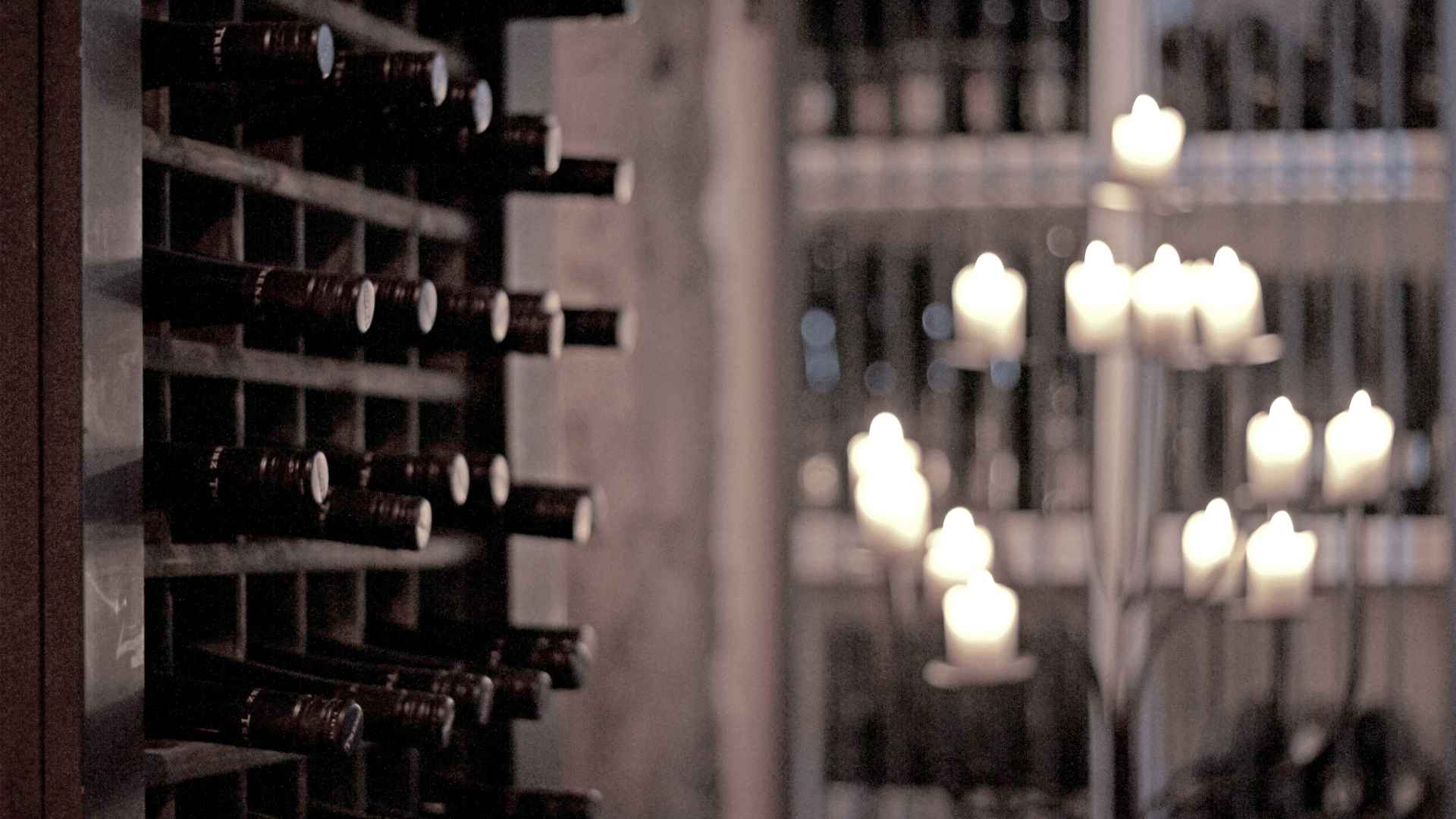A wine cellar is more than just a storage space; it's a sanctuary for wine enthusiasts and collectors. This meticulously designed room or area within your condo serves a crucial purpose: to provide the perfect environment for aging and preserving your wine collection. But why do we need a wine cellar in our condo?
Beyond safeguarding your investment, a wine cellar offers a realm of benefits, from ensuring your wine matures gracefully to creating an elegant setting for entertaining guests and adding a touch of sophistication to your living space.
In this exploration, we'll delve into the essence of a wine cellar, its vital functions, and the compelling reasons why it's a coveted addition to any condominium, whether you're a passionate oenophile or simply looking to elevate your living experience.
Creating a wine cellar in a small space can be a rewarding project that allows you to enjoy your wine collection without the need for a large, dedicated room. Here are the steps to build a wine cellar in a small space:
Select the location
Selecting the right location is the cornerstone of building a small wine cellar. Choices like a closet, under-stairs area, spare room, or a corner of your basement offer varying advantages. A closet, for instance, provides an enclosed space that can be sealed effectively to control humidity levels. Under-stair areas often enjoy stable temperatures and make clever use of otherwise wasted space. Spare rooms can be transformed into dedicated wine cellars, offering more flexibility in design and storage capacity.
Similarly, a corner in your basement can be an ideal choice, provided it maintains consistent temperature and humidity levels. Whichever location you choose, ensure it aligns with your space constraints and the need for maintaining optimal wine storage under humid climate conditions.
Assess the space
Measuring the dimensions of your small wine cellar space is a crucial step in planning your wine storage. By accurately assessing the available space in the wine cellar, you can determine how many wine bottles it can comfortably accommodate and optimize your storage layout. Consider factors such as the height, width, and depth of the space, as well as any irregularities or obstacles that may affect your wine rack or shelving configurations. This measurement not only ensures efficient utilization of the space in the DIY wine cellar but also helps you select the appropriate wine racks or shelves to fit within your designated wine cellar area, making the most of your small space for your wine collection.
Temperature and Controlling Humidity
Investing in a wine cellar cooling unit or a wine refrigerator designed for small spaces is a critical aspect of creating an effective wine storage solution. These specialized units are engineered to maintain the precise temperature and humidity levels required for proper wine aging and preservation. The ideal wine storage conditions typically involve a temperature of around 55°F (12–14°C) and humidity levels of approximately 70%.
A wine cellar cooling unit or wine refrigerator ensures that your small wine cellar maintains these conditions consistently, safeguarding your valuable wine collection from temperature fluctuations and humidity imbalances. When choosing a wine room cooling unit or refrigerator, consider factors such as its capacity, energy efficiency, noise level, air resistance, and any additional features like digital temperature controls or alarms. This investment is pivotal in providing your wines with the optimal environment they need to mature gracefully and retain their quality.
Insulation and Vapor Barrier
Effective insulation and moisture control are paramount when establishing a small wine cellar. Properly insulating the walls, ceiling, and floor of the space is essential to minimize heat transfer and maintain a stable temperature. Utilizing insulation materials such as foam board, fiberglass, or spray foam insulation helps create a thermal barrier. Additionally, sealing any gaps, cracks, or openings in the cellar's structure prevents air leakage, ensuring that the temperature remains consistent.
In parallel with the installation of insulation, the incorporation of a vapor barrier is vital to ward off moisture intrusion. This barrier acts as a protective shield, preventing excess humidity from seeping into the cellar, which can lead to mold growth and damage to wine labels, glass, and corks. By combining proper insulation and a vapor barrier, you create an environment that not only maintains ideal wine storage conditions but also safeguards your collection from potential temperature and humidity fluctuations.
Wine Racks or Shelving
Selecting the appropriate wine storage racks or shelves is a pivotal aspect of maximizing the utility of your small wine cellar. It's essential to choose units that harmonize with the available space, ensuring an efficient and visually appealing layout. Consider the style and material that best complement your aesthetic preferences and the overall design of your wine cellar. Wooden racks exude timeless elegance, while metal racks convey a contemporary, industrial feel. Modular systems offer flexibility, allowing customization to suit your specific storage needs.
Moreover, if you're aiming to save floor space, contemplate wall-mounted options. This not only conserves room but also adds a distinctive touch to your wine cellar, dining room, or bar's decor. With the right wine racks or shelves in place, your small wine cellar can efficiently house and showcase your collection while enhancing the overall ambiance of the space.
Lighting Your Own Wine Cellar
Use low-heat, low-UV lighting to showcase your wine collection. LED lighting is a popular choice for small wine cellars. Furthermore, periodic checks of your cellar's lighting are essential. Ensure that any low-heat, low-UV lighting fixtures remain functional and do not emit excessive heat or harmful UV rays. This preserves the quality of your wines and prevents any undesirable effects of light exposure.
Organization of Wine Cellars
Organizing your wine collection in your small wine cellar is a strategic endeavor that contributes to both its functionality and your enjoyment of the wines. A logical arrangement system can simplify the process of locating specific bottles and managing your inventory effectively. Common methods include categorizing wines by type, region, varietal, or vintage, depending on your preferences and collection diversity. By categorizing in this manner, you can create a visually clear and easily navigable layout within your cellar. Additionally, employing clear labels on your wine racks or shelves aids in quick identification.
Ensuring accessibility to frequently consumed wines while reserving special selections for deeper storage adds a practical dimension to your organizational approach to wine storage. Ultimately, an organized wine collection not only streamlines your wine cellar experience but also enhances your appreciation of the wines you've carefully curated over time.
Decor and Aesthetics in a Wine Room
The aesthetic appeal of your small wine cellar is not to be underestimated, as it greatly influences the overall ambiance of the space. It's essential to choose a design style that aligns with your home's existing decor, whether it's modern, rustic, traditional, or another theme. A cohesive color palette that complements the surrounding areas enhances the sense of harmony within your living space. Select colors that evoke sophistication and warmth, creating an inviting atmosphere.
If you're a wine and beer fan, you might want to take the wine room ideas a step further and create a full home bar that includes seating or a personal tasting area, while passionate vino lovers will want to focus exclusively on a cellar or cooler. Do some research on the best conditions for storing wine, and be sure your space mimics those conditions. How should I decorate my wine room? Although Mediterranean wine cellars are common, changing up the decor is an easy way to create your own space. Ornate wood and even stone walls are traditional wine cellar ideas, while metal and glass finishes are more trendy.
To further elevate the ambiance, consider decorative accessories and the inclusion of decorative elements like wine art, labels, display racks, or wine-related decor. These touches can infuse character and charm into your wine cellar, making it a captivating and stylish focal point within your home. By paying attention to both the functional and aesthetic aspects, you can create a wine cellar that not only preserves your collection but also enhances the overall interior design of your living space.
Wine Cellar Management
Safeguarding and optimizing your wine collection involves meticulous record-keeping practices. A detailed inventory log is essential, capturing vital information for each bottle, such as its name, producer, varietal, vintage, and regional origin. Equally important is noting the purchase date, which serves as a reference point for tracking the wine's aging process accurately. Additionally, incorporating drinking windows based on your research and expertise aids in determining the optimal time to enjoy each bottle. Don't overlook bottle conditions; record any labels that might be damaged or bottles that show signs of wear.
To streamline this organizational effort, consider utilizing modern wine cellar and management software or mobile apps tailored for wine collectors. These digital tools can simplify the process, providing a centralized database that facilitates easy access to your collection's details. This comprehensive approach not only enhances your wine cellar and cooling system's functionality but also ensures that you derive maximum enjoyment from your carefully curated wines, all while maintaining a systematic and efficient inventory management system.
Regular Maintenance
The vigilance of temperature, humidity, and lighting is paramount in safeguarding your small wine cellar's optimal conditions. Regular monitoring is essential to ensure that these critical factors remain within the desired range. Employ a dependable thermometer to track temperature fluctuations and confirm that it consistently hovers around the ideal 55°F (12–14°C). Concurrently, use a hygrometer to monitor humidity levels, striving for the recommended 70% range. Any deviations from these benchmarks should prompt immediate investigation and corrective action.
Additionally, remember to perform routine maintenance on your wine cellar cooling unit or refrigeration system as recommended by the manufacturer. This preventative approach ensures that the equipment operates efficiently, maintaining the ideal conditions for proper storage of your cherished wine collection. By diligently tending to these factors, you can continue to enjoy the fruits of your own wine cellar for years to come.
Building a wine cellar in a small space requires careful planning and attention to detail. By optimizing the available area and maintaining the ideal storage conditions, you can create a functional and attractive wine storage solution that enhances your enjoyment of wine within the confines of your condominium or small living space.
To learn more about our condominium properties, email [email protected], follow @VistaResidencesOfficial on Facebook, Twitter, Instagram, and YouTube, or call the Marketing Office at 0999 886 4262 / 0917 582 5167.










